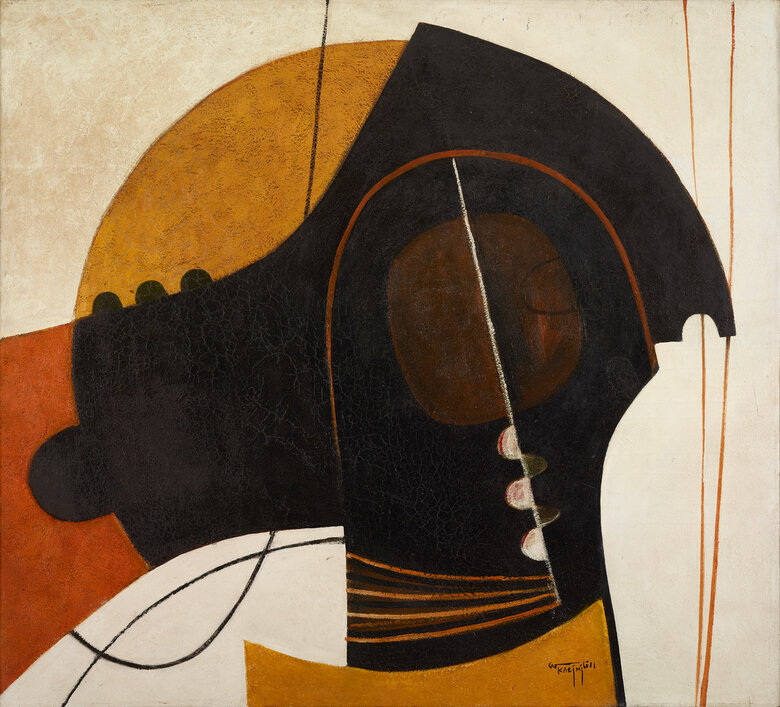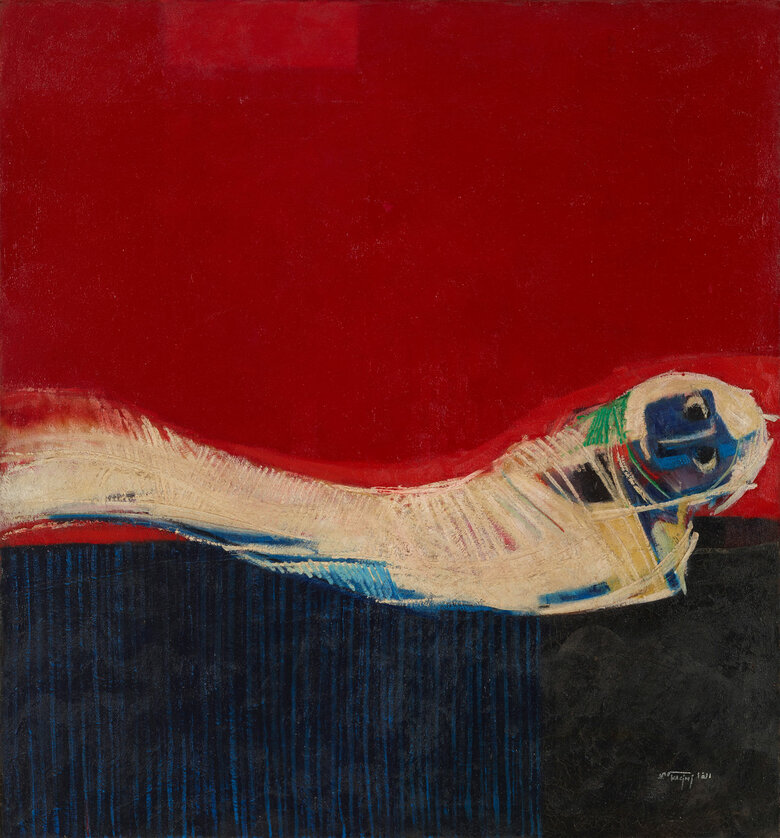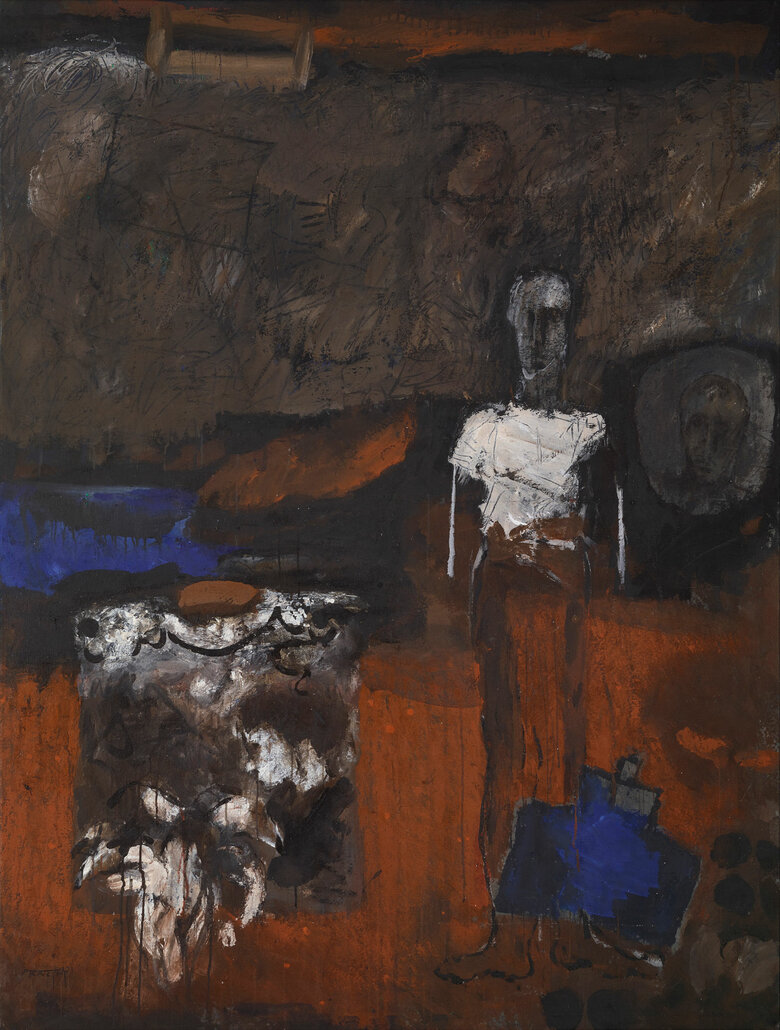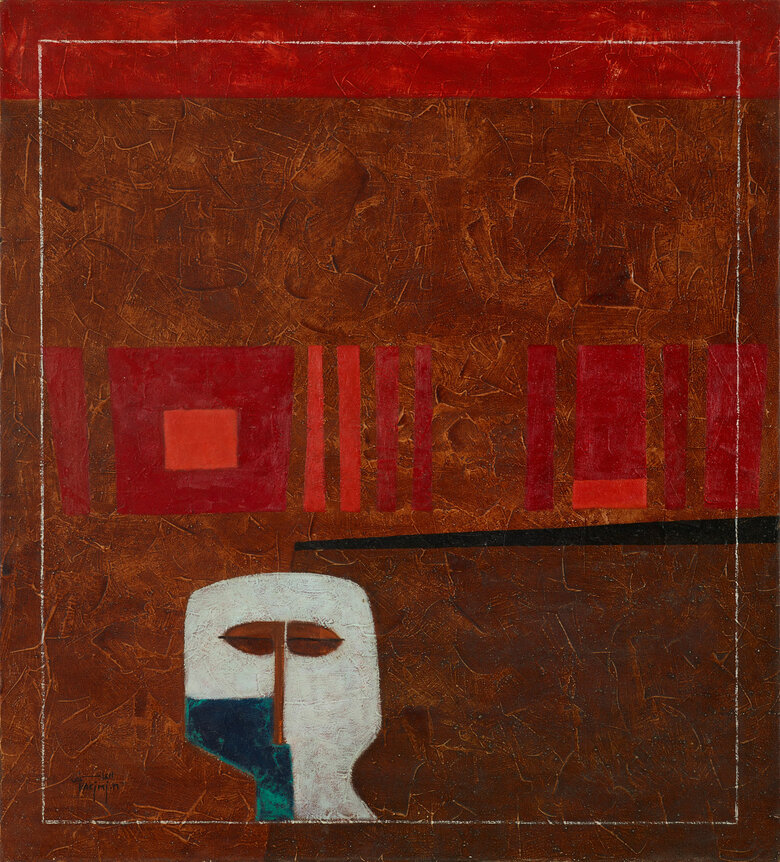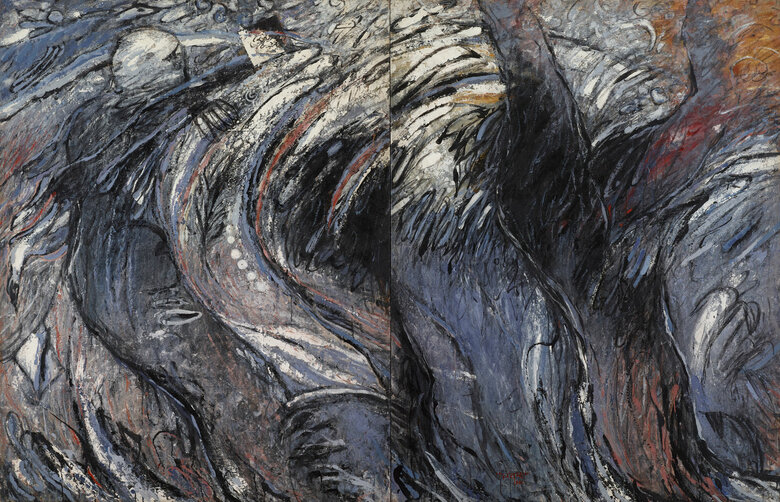Mohammed Kacimi’s L’Oracle des Temps, 1996, is an expressive depiction of the Gulf War, an armed conflict between Iraq and a 42-country coalition led by the United States, ending up in the invasion of Iraq in 1991. It reflects Kacimi’s unique style during the last decade of his life, which saw his works move towards an interest in performance and gestural depictions with a focus on fading colors and negative spaces across large scale canvases.
Across a vast horizontal white canvas that stretches 10m wide, the artist depicts fragmented figures painted with thick layers of red and black acrylic paint, accompanied by blotches of his famous ‘Kacimi’ natural blue pigment. On the far-right side of the painting, a standing figure extends his arm above the city as he seems to orchestrate the war planes in their destruction below. Next to it, a monstrous black human form with wings is depicted diving headlong into the city below, symbolizing the bombing and shelling that ravaged the Iraqi city, while in the background we see a thick band of brick red representing the violence and bloodshed. Moving further left, two black human figures in the middle of the canvas seem to be reeling back in horror, while the left side is filled with fragmented silhouettes of half formed people, body parts, hovering faces and masks, connected together again by another interrupted brick red band, streaked behind them and through them. The eeriness of these ghostlike bodies and body parts are an embodiment of how the trauma of war haunts and lingers.
L’Oracle des Temps was created in situ in front of the public on February 14, 1996, at the Maison de la Culture in Bourges, France. The work was created at night, with Kacimi hanging his canvas on a wall and illuminating the space with a projector that cast the audience’s shadows, which he then captured in the painting. He had also commissioned a dancer to perform inside a cylindrical plastic tube, sprinkling Kacimi’s signature blue pigments onto the translucent wall that separated him from the audience, while choreographically echoing the artist’s own movements as he painted. The gestural brushwork brings out the spontaneity and urgency that was part of the process of its creation.
As suggested by the painting’s title, which translates to “The Oracle of Time”, the piece itself draws inspiration from West African oral traditions which are kept alive by the griot, travelling poets, and story-tellers. Through the visual and performative aspects of the piece, the artist himself becomes an oracle-maker, in which he portrays the past to highlight the future. This emphasizes the notion of time’s circularity, in which past, present and future are intertwined in one moment, as suggested by the text on the far left of the painting, which reads “les poétes / pour tous / les temps” (the poet / for all / the time).
This poetic inclusion highlights the mystical aspect of the painting. Here the poet can be interpreted metaphorically as an oracle, who speaks of the past to foresee the future for all. This puts the poet in the position of a creator, not of a physical world, but of a symbolic one, where time and experience are shaped through art, raising the artist to the position of a demiurge.
With roots in both Platonic and Gnostic philosophy, demiurge is one who creates or shapes the material world. Within the context of the painting, this is highlighted by the ritualism of painting as an action, in this case painting on the spot in front of and for the audience while drawing inspiration from their cast shadows, which is then reconstructed into something of significant truth and meaning regarding the visible world. Here the artist is a witness, a translator, and a poet of human history. L’Oracle des Temps is not a painting of political activism but one of poetic resistance, highlighting the past in the present to foresee the inevitable future.
Signed in Arabic and English on the lower left front



-Front.jpg)
-Front.jpg)
